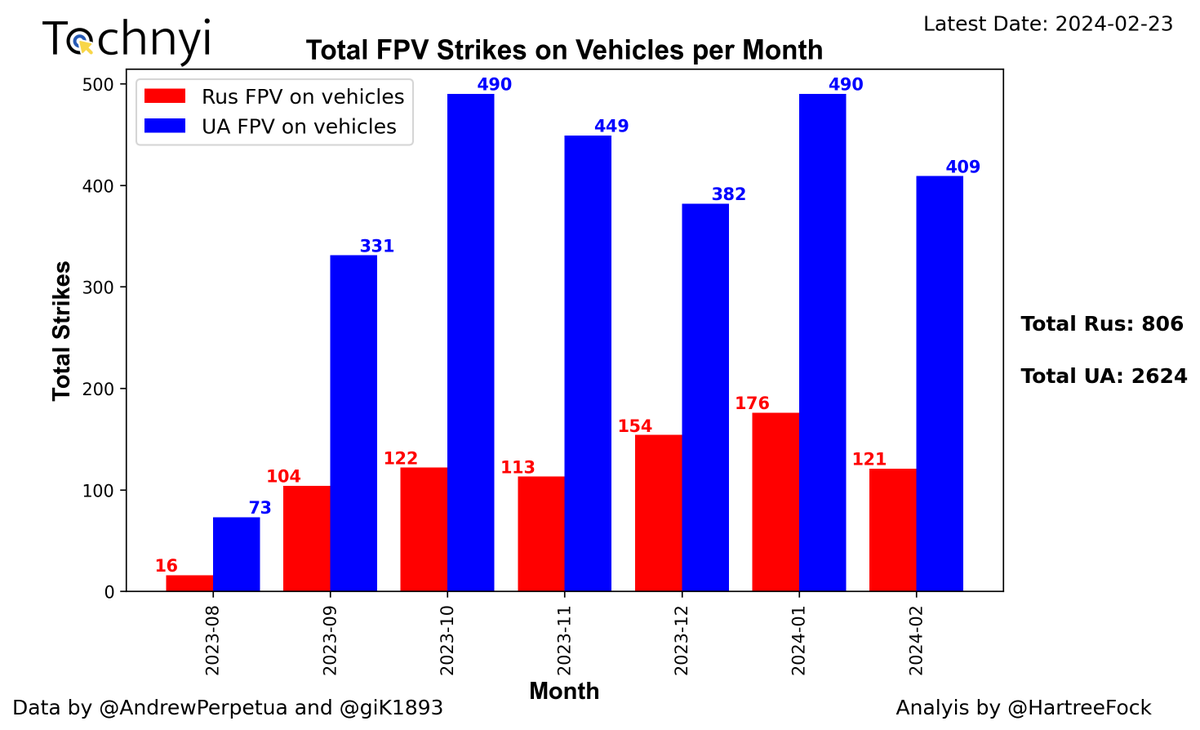1/4 I believe it's a good time to give a quick update on FPV drone usage. Let's start with the progression and total numbers. As we know from my last update, February was one of the most intense months for FPV drone usage, and it's now confirmed that the growth is at least quadratic and shows no signs of stopping. As of March 9th, Ukrainians have already used 721 drones, and at this rate of growth, they will reach January's results in just a week.
In terms of overall usage, Russia is falling behind. There are different possibilities for why this is happening - lack of drones, lack of pilots, lack of dedicated ammunition - but I think a combination of the first two factors is the most likely. Overall, Russia doesn't have the staggering numbers claimed by its propaganda.

In terms of overall usage, Russia is falling behind. There are different possibilities for why this is happening - lack of drones, lack of pilots, lack of dedicated ammunition - but I think a combination of the first two factors is the most likely. Overall, Russia doesn't have the staggering numbers claimed by its propaganda.


2/4 Ukraine currently holds a significant advantage in both infantry and vehicle categories. This is a result of recent failed attacks by Russian forces. Ukrainian troops have been effectively utilizing FPV drones as a defensive tool, which could potentially initiate a new era of mobile defence doctrine. I recently discussed the concept of area defence and its limitations in an article, which can be found at . It is encouraging to see the new leadership utilising more mobility in their defence strategy. However, only time will tell if this move proves to be successful.tochnyi.info/2024/03/trench…



3/4 The data presented in the graphs regarding attacks on defensive positions further confirms the previous analysis. It appears that trenches are the preferred target for attackers using FPV drones. Although there seems to be a marginal gain by the Ukrainian forces in this area, the current situation can change due to ground evolution of South Robotyne.



4/4We began tracking NVG/Thermal drones thanks to the hard work of @AndrewPerpetua and @giK1893. Data in this field is limited, and Ukrainian numbers are likely higher due to organizations such as @wilendhornets developing and providing a significant number of NVG FPV drones. However, there is still a gap in the data we have collected so far. It is important to invest in this area and support any activity that aims to deliver equipment enabling these capabilities. The situation for Ukrainian forces is evolving positively, but the road to victory is still long, and there are several challenges ahead.

• • •
Missing some Tweet in this thread? You can try to
force a refresh


















